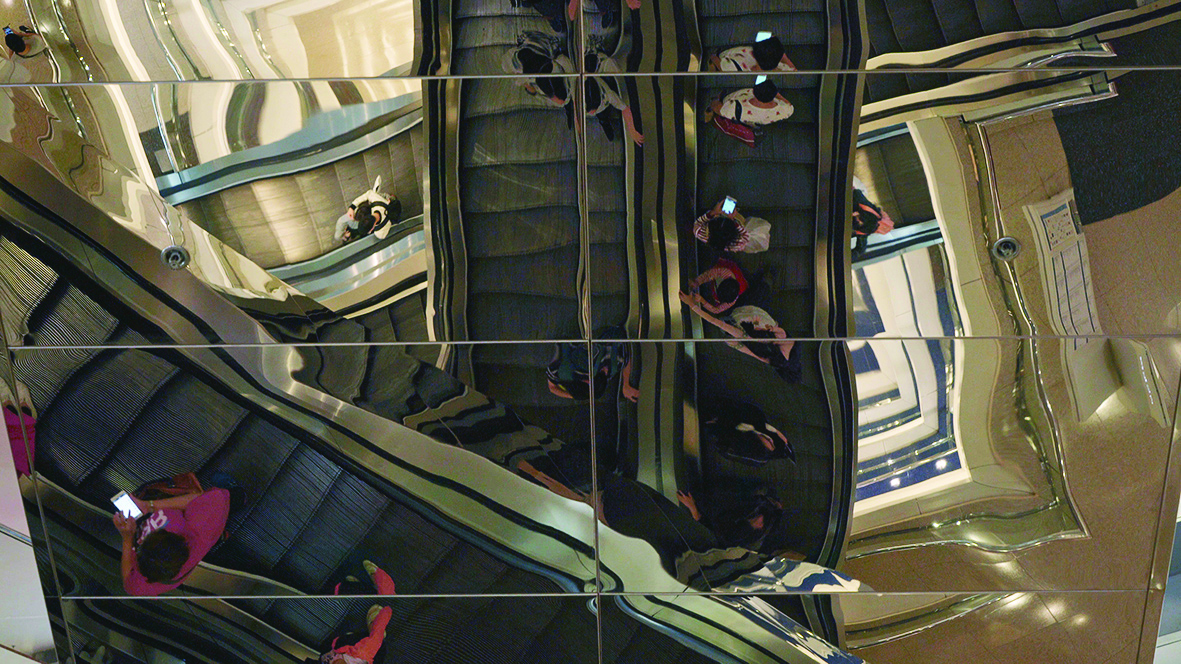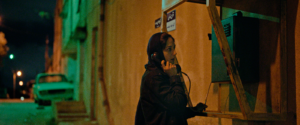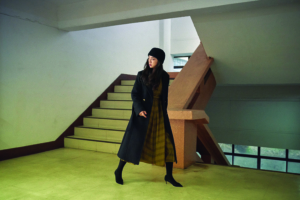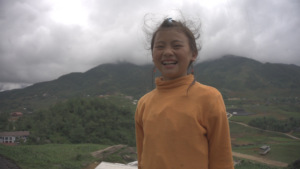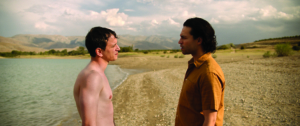There’s a scene in the documentary Hong Kong Moments (Zhou Bing, 2020) in which Benny Yeung, a district councillor who’s been in office for twelve years, takes a taxi ride through the city. It’s 2019, so the conversation with the driver inevitably turns to the ongoing anti-government protests. It quickly becomes clear that they are on either side of Hong Kong’s intractable ideological divide: Yeung, a conservative politician; the driver identifying with the independence movement. Almost semantic disagreements between the interlocutors about who is responsible for the violence gripping the city – police or protesters – soon foment real hostility, the conversation turning from uncomfortable to heated in a blink. In the end, the driver asks the politician to stop talking; the rest of the journey takes place in uneasy silence, at a tense stalemate.
It’s a hugely symbolic sequence in a documentary that dares try to straddle the divide that, in Hong Kong in 2019, seemed like an insurmountable chasm. The protests rose up against a proposed extradition bill that would grant more political powers to mainland China and lessen the independence of local citizens;[1]See Kathryn Diss, ‘Hong Kong Protests over Extradition Law Turn Ugly as Riot Police Clash with Demonstrators’, ABC News, updated 10 June 2019, <https://www.abc.net.au/news/2019-06-09/hong-kong-protests-over-extradition-law-turn-ugly/11194370>, accessed 21 October 2020. thus, they can be traced back through the 1997 handover to the nation’s colonial history. The divide wasn’t between just police and protester, but Chinese and Hongkonger, mainland and independence, conservative and liberal, a past generation and a new one.

Hong Kong Moments’ filmmakers wanted to counter partisan media coverage, remaining centrist in a climate that demanded side-taking. ‘Choosing to film people from the opposite standpoint, [we felt that] other films would not take that approach,’ says producer Ricky Choy. ‘The media were quite extreme in this time. Either you were pro-democracy, or you were pro-government. There was no in-between […] We wanted to be neutral.’ So the production undertook the difficult task of finding people on either side of the political divide who were willing to speak out, with many potential subjects declining out of fear of reprisal or misrepresentation. Eventually, a range of figures agreed to participate; as an opening intertitle explains, ‘In this historic social movement, seven Hongkongers from different walks of life were filmed on three specific days.’
There’s Yeung; Ray Ng, a 48-year-old taxi driver (not the one in the scene above) with conservative values, whose son is a protester; Kate Lee, a Lei Yue Mun tea house owner who found media fame/infamy for maintaining a pro-police stance to the detriment of her business; and Peter Yip, an orderly in the Police Tactical Unit, the on-the-ground force used to quell/incite demonstrators. There’s also a protester, pseudonymously credited as ‘Ah Bau’, who is filmed with hidden face and distorted voice; Nok Lee, a 29-year-old volunteer first aider who treats wounded activists amid the fray; and Jocelyn Chau, a young community organiser in downtown Hong Kong who is running as a pro-democracy candidate in an upcoming district-council election.
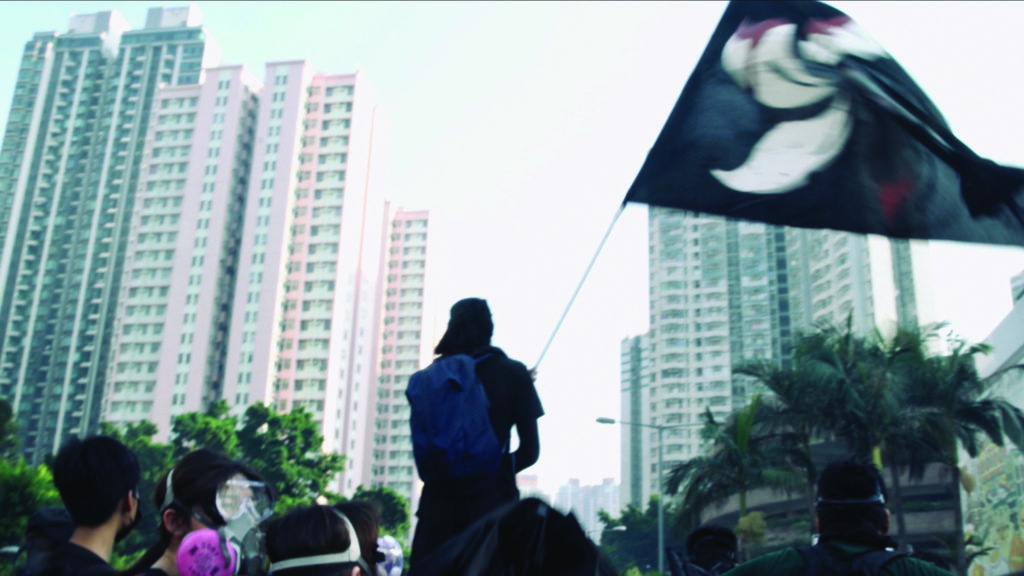
Though they occupy various positions across the political divide, the very nature of that conflict is something that unites them. ‘It was very divided. You had to come out and say which side you were on,’ explains Choy, of the atmosphere during the film’s making. Such sentiments are echoed by the interviewees in the documentary. ‘Society has become so polarised now,’ says Yeung. ‘The society is so divided … [and has] become even more polarised,’ Ng concurs. Chau speaks of ‘Hong Kong’s deep-rooted political problem’ as something entrenched, while Ah Bau, even as he defiantly declares he’ll never stop protesting (‘Hong Kong needs to be liberated. A revolution is needed, and it belongs in our time’), sees this as the ongoing daily drama of Hong Kong, something encouraged by its political situation. ‘That’s what the government wants us to focus on: the police/protester conflict,’ he says.
Hong Kong Moments brutally succeeds in making history personal – taking a grand conflict and bringing it down to an individual level.
Many of these participants are made paranoid by the contentious climate, spooked by things that’ve happened to them, or are happening around them. Kate Lee became a champion in certain circles for being a pro-police business owner (‘Bullied for Upholding Justice, Teahouse Owner Has No Regret Supporting Police’ proclaims a newspaper headline she proudly displays), yet was subjected to a campaign of harassment designed to disrupt her business, including review-bombing and health inspectors being inundated with complaints about the establishment. ‘I won’t comply and be intimidated,’ she says. Yip is treated to the open antipathy and animosity that greets the police: on the streets, they are booed; greeted by chants of ‘go home!’; called murderers, rapists, cockroaches, motherfuckers. This leads him, like so many police officers, to openly identify as ‘one of the victims’ of the conflict – especially given that he’s been photographed at protests, which has led to doxing and cyber-harassment. ‘I don’t want to keep worrying about where to eat, where to shop,’ he laments.
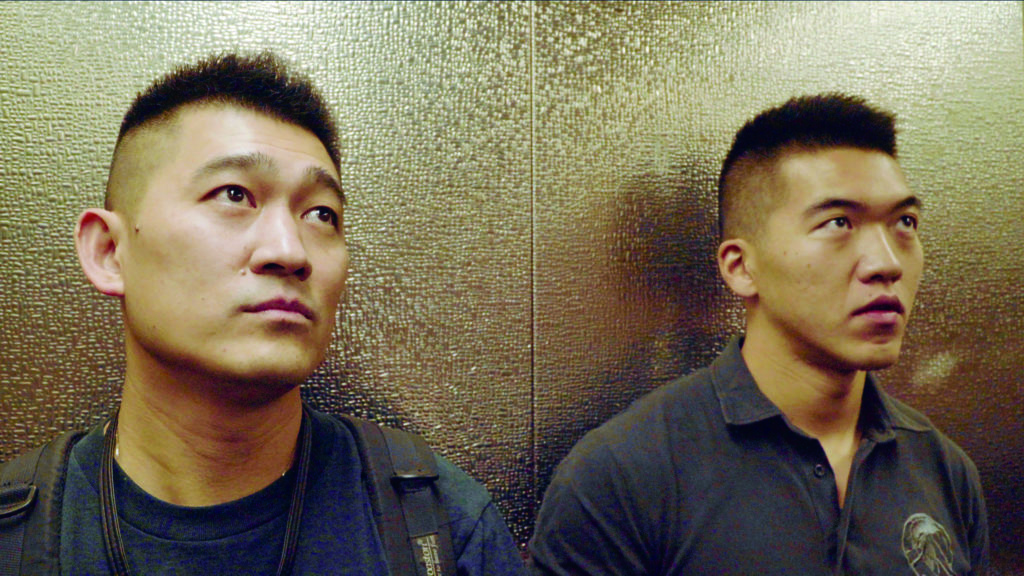
We witness Chau become a victim of the conflict on video. As she and an assistant record police cordoning off streets on a sidewalk at night, officers aggressively, combatively approach her. An intertitle coldly informs us that they were charged with ‘assaulting a police officer’ (charges of which Chau was acquitted a year later, in August 2020[2]Kelly Ho, ‘Hong Kong Court Acquits District Councillor of Police Assault Charge; Magistrate Says Officers “Told Lie After Lie”’, Hong Kong Free Press, 13 August 2020, <https://hongkongfp.com/2020/08/13/hong-kong-judge-acquits-district-councillor-of-police-assault-charges-says-officers-told-lie-after-lie/>, accessed 12 October 2020.) while we cut to third-person mobile-phone footage showing her being pressed down on the pavement, forcibly cuffed by officers while she screams. ‘After I was released, I received many threatening messages,’ she later recounts, to camera. ‘They called me a cunt. Said they would stop me from leaving Hong Kong. Threatened to stuff wasabi into my vagina and stick it with a police baton. These intimidating words were to stop me speaking. But they can’t stop me.’
Here, Hong Kong Moments brutally succeeds in making history personal – taking a grand conflict and bringing it down to an individual level. Its greatest strength is its on-the-ground approach, which posits the production as a witness to history, its cameras following first aiders, police officers and protesters into the fray. ‘We knew it was going to be a very important moment in Hong Kong’s history, and we were living through it,’ Choy explains. ‘As people who work in documentary, we wanted to make something that documented what was happening in our society, for historical value.’ There’s no narration and few moments of framing text; instead, we hear subjects in their own voices. Zhou took influence from direct-cinema don Frederick Wiseman in this observationalism,[3]Anita Malhotra, ‘Interview with Zhou Bing’, Artsmania, 3 June 2020, <https://artsmania.ca/2020/06/03/interview-with-zhou-bing/>, accessed 12 October 2020. but there’s none of Wiseman’s leisurely pace in the documentary; instead, the film is ninety tight minutes, its second act feeling like an action thriller as it uses time stamps to situate its various players in the lead-up to a night of violent protest.
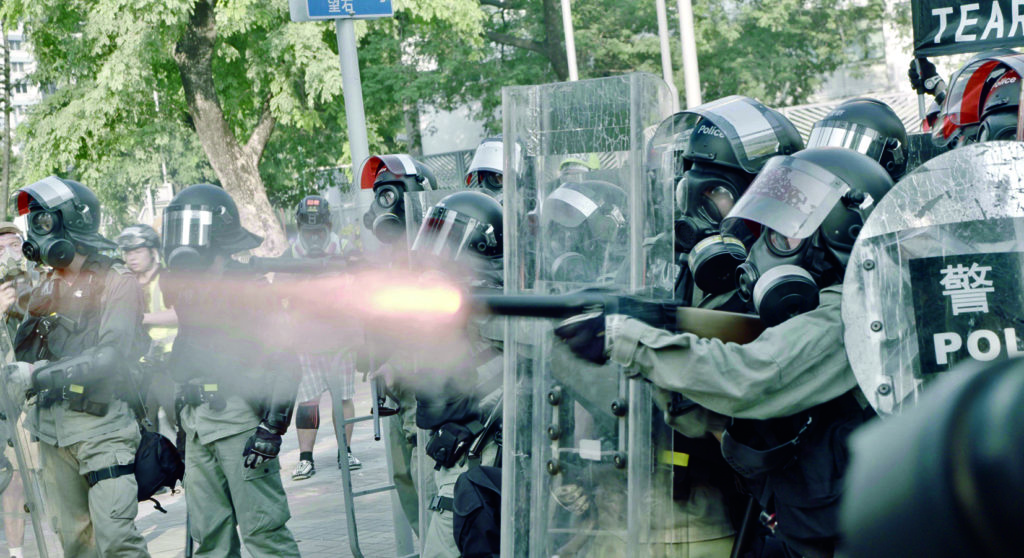
These protests come on the weekend when Hong Kong is ‘celebrating’ the seventieth anniversary of the founding of the People’s Republic of China, something that is obviously divisive (‘First of October is disgusting,’ spits Ah Bau. ‘I wouldn’t celebrate on US national day, nor on Japan’s national day. It’s got nothing to do with me – why would I celebrate it?’). Ng organises a motorcade of taxis, all fluttering Chinese national flags; Kate Lee proudly wears a ‘70’ T-shirt and dresses up her tea house for a celebration; and Yeung and Chau head out politicking, working either side of the conflict. Though protests in Kowloon remain peaceful, on Hong Kong Island things soon turn violent. We witness this through following Nok Lee, the first aider, whose hi-vis-clad response crew (‘Team Alpha’!) watch protests, preparing to step in and help those wounded or suffering from the effects of tear gas.
Though Zhou can’t resist an eye-of-god overhead of the vast crowds holding colourful umbrellas, soon we’re plunged into the fray, seeing the wounded. This high drama is again given a dramatic, cinematic treatment through use of montage, slow motion and score; after the rawness of Chau’s assault, this sequence is constructed more like the climax of a fantasy epic. First, there’s action movie–esque ‘pulse-pounding’ music when police start using live rounds and people scatter; then slo-mo and down-tempo piano tinkling tell us that this is sad and tragic – the streets soon emptied, litter blowing through places that, just prior, were packed with peaceful protesters. The first aiders call the six hours of fighting ‘hell’; Ng eulogises it as the ‘worst day’ of the protests.
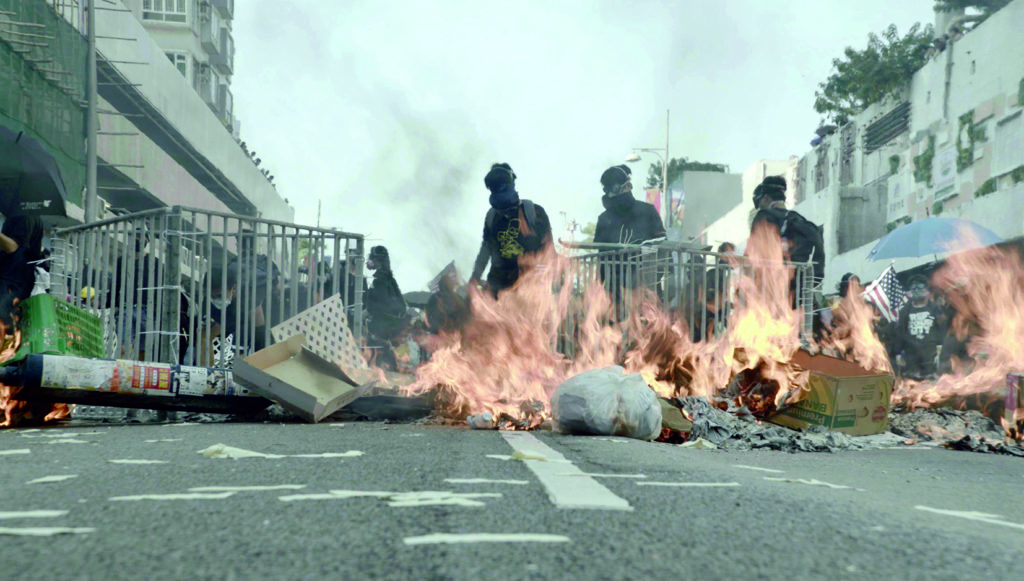
The epilogue to this in-the-moment movie comes over a month later, on 24 November 2019, when district-council elections play out peacefully, and change comes not from protest but ‘within the system’ (as Ah Bau says). While there’s tension and anger at counting stations, where journalists are watching out for foul play, the end result marks a huge swing towards pro-democracy and independence candidates – including Chau, who takes the office of district councillor at the age of just twenty-three. There’s a sweet moment, when her win is announced, in which her team erupts in celebration and she stays silent, serene, perhaps stilled by disbelief. Talking to press in the wake of her win, she doesn’t relent, defiantly discussing the ‘unusual suicides’ of protesters, hoping that these suspicious deaths will have galvanised Hong Kong society, and will inspire both citizens and powers that be to move on from the horrors of 2019. Everyone wants to leave the conflict behind, to learn from it – even Yeung, who loses his seat in Yau Ma Tei, one of Hong Kong’s most multicultural districts. The film ends with Kate Lee offering a sentiment of simple hope: ‘I have faith in Hong Kong’s future.’
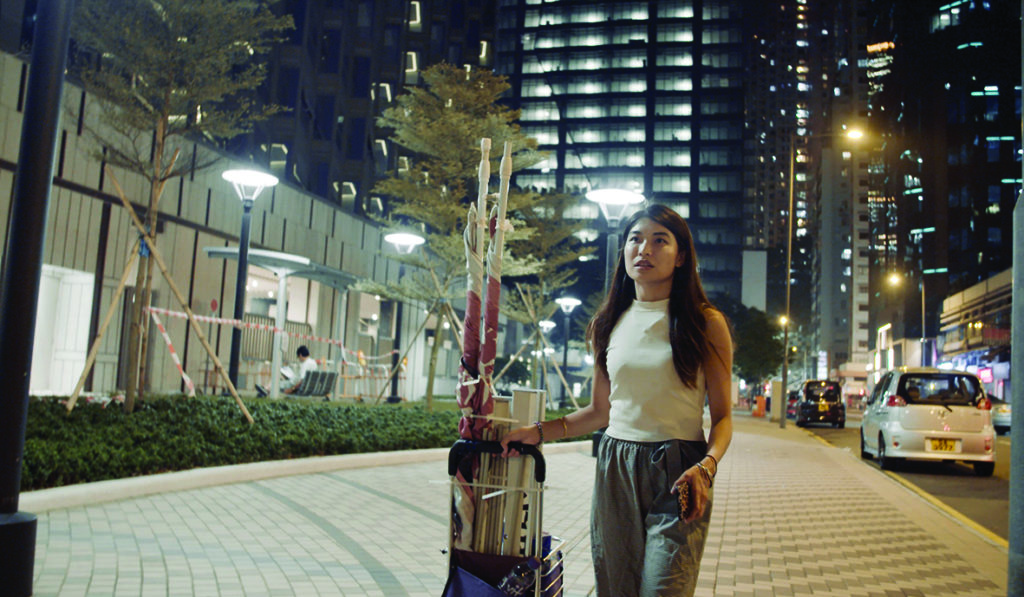
Architecture and morality
Whereas Hong Kong Moments is a film made in the moment and on the ground, and one that ends by looking towards the future, Many Undulating Things (Bo Wang & Pan Lu, 2019) is about the present as a manifestation of Hong Kong’s past. It’s an essay movie, the collaborative work of a video artist (Wang) and an academic (Pan), undertaking a study of Hong Kong as socio/geopolitical symbol. The seven years they spent making the film, originally conceived in 2012, ‘was definitely accompanied by the changing tension and atmosphere’ in Hong Kong, Wang says. ‘Looking back from now, I think our film provides a spatial context for many of the outbreaks later.’
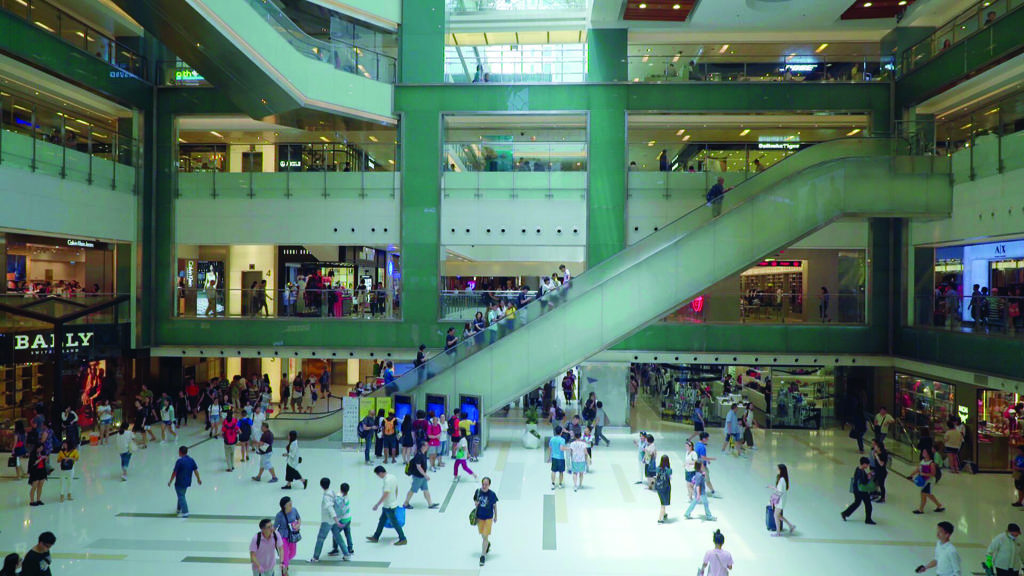
In exploring and ruminating on the space of Hong Kong, Many Undulating Things starts with shopping malls. Wang’s camera – he also serves as camera operator, DOP and co-editor – observes the literal line of demarcation marked by brickwork in a harbour mall: on one side is the free public space of the city; on the other, the faux-public space that’s the private property of a commercial developer. In the former areas, he’s able to film as he pleases; the latter space is, however, controlled by corporate interests. Throughout Many Undulating Things, Wang and Pan return to shopping malls, haunt them (like, it’s posited, ghosts themselves do – spirits finding the perpetual 21 degree Celsius temperature welcoming), draw connections between them and Hong Kong itself. Where malls were once public plazas, with grand central spaces often boasting fountains, the erosion of community and the empowerment of corporate ownership have radically altered their civic and psychological identity: malls turning from communal spaces into streamlined capitalist machines; centrepiece fountains and public benches removed; anyone who dares stop to linger – and commit the great sin of not-shopping – soon hurried along by privately employed security. ‘Hong Kong is an archetype for many other global cities today,’ Wang says. ‘The encroachment [into] public space by private or corporate interests, the discipline of human behaviours through modern biopolitical means, the homogenisation of space into non-place are commonly shared throughout the world.’
But the film’s fascination with malls isn’t just with their function as symbols of late-capitalist globalisation (the film opens with a quote from Karl Marx’s Capital[4]‘It is not the tropics with their luxuriant vegetation, but the temperate zone, that is the mother country of capital.’ Karl Marx, Capital, a Critique of Political Economy: The Process of Capitalist Production, trans. Samuel Moore & Edward Aveling, The Modern Library, New York, 1906 [1867], p. 563.). Their centrality in Hong Kong society was made obvious – and Many Undulating Things proved prescient – when they became highly politicised, contested spaces (or ‘non-places’) during the 2019 protests.[5]See, for example, ‘Hong Kong Protests: Clashes in Shopping Mall’, video, BBC News, 15 July 2019, <https://www.bbc.com/news/av/world-asia-48996505>, accessed 12 October 2020. Here, they spoke of the city’s lack of local identity, and the fight for it. ‘Hong Kong is often seen as a city of strong and unique characters,’ Wang says, ‘but we try to capture the other side – the side of alienation, of being a non-place, which we consider as central to the construction of its identity.’
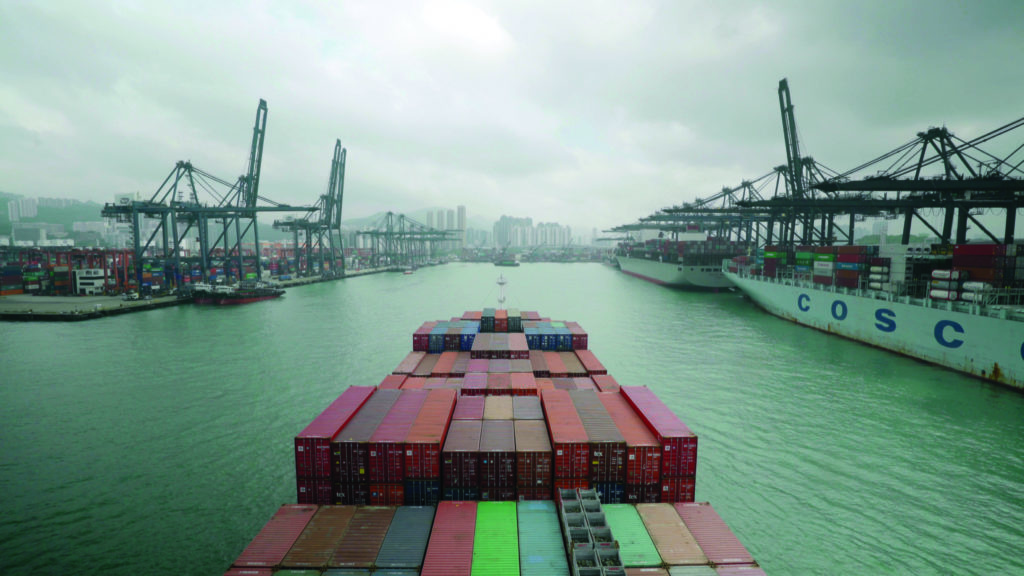
The central subject of the text, Wang says, is ‘urban space: its construction, usage, [and] the ideas and conceptions behind it’, and the production received a grant from Shenzhen’s Bi-City Biennale of Urbanism/Architecture. The film is attuned to what urbanism and architecture have to say about a society, how buildings can stand as symbols of otherwise-secret backchannels of money and power. ‘They say that the history of landscape is a history of male domination,’ says a ‘fictive’ narrator (played by Yu Araki), ‘and the skyline is always a contour of power’. We visit luxury hillside houses, high-rises, tenements, the Chungking Mansions (cinematically immortalised by Wong Kar Wai in 1994’s Chungking Express) and the ‘cage houses’ in which destitute escapees from the mainland while away their days. We learn how land values were artificially inflated by controlled allotment, and about the unspoken building practices that were tantamount to colonialist segregation. What the narration calls ‘vertical hierarchy of status’ is written in the island’s very geography: the peak ‘reserved for the most privileged’; European settlements and public parks and gardens built on the middle level; while ‘crowded and orderless lowlands were left to the Chinese’.
Many Undulating Things is essentially an essayistic riff on Hong Kong’s history as port of trade, a conduit through which the ‘flows of goods and capital’ passed into and out of Asia.
This is examined, in part, through a critical reading of Hollywood oldie Love Is a Many-Splendored Thing (Henry King, 1955), a technicolour melodrama about a cross-cultural Hong Kong romance that features Jennifer Jones in yellowface. Pan and Wang reappraise the film through a colonial lens, as they do Hong Kong’s botanical gardens and the transportation of ‘exotic’ oriental species (aided by the invention of the Wardian case and the greenhouse) back to Britain. Colonialism laid out a network for global trade – tea introduced from China to Ceylon to be a British crop, tobacco seeds and breadfruit (the latter to feed slaves) brought to the Caribbean, Australia made into a penal colony – with these old routes still echoed in the multinational supply chain, in the way African cotton is turned into Chinese clothing to be sold in English chain stores. ‘Imperial expansion mutated the order of human society; the transplantation of plants altered the order of nature,’ Araki narrates, invoking seventeenth-century philosopher Francis Bacon’s observation that colonialism was a ‘massive planting and displanting of both indigenous plants and indigenous people’. He later refers to Joseph Banks, a man once featured on the Australian five-dollar note, as ‘a cultural cross-dresser boasting about international travel experiences – an image of imperial possession’.
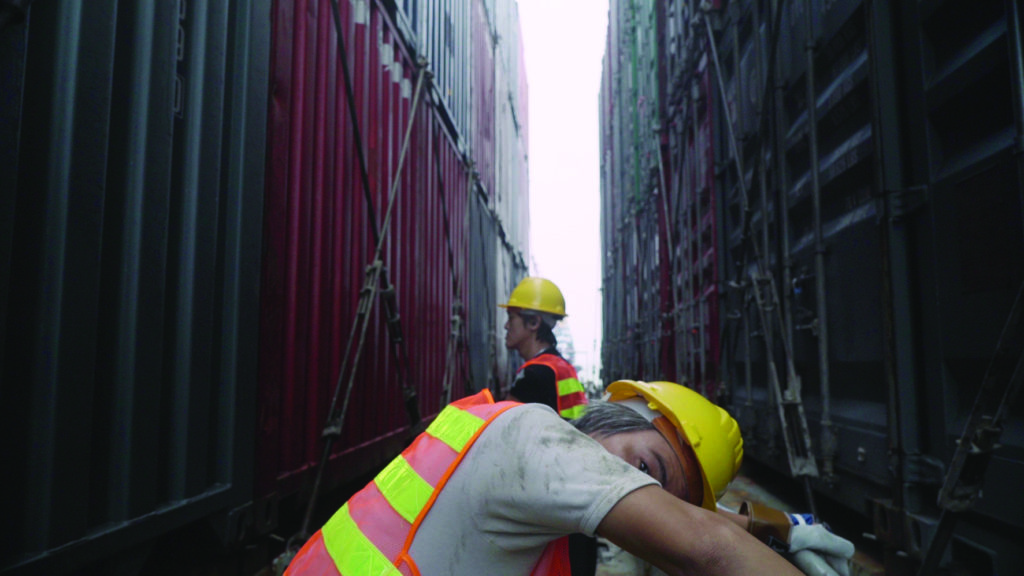
On screen, we witness archival photos of nineteenth-century Chinese neighbourhoods, the large-scale forestation and garden/parkland projects beginning in 1860, with the epoch of the industrial age represented by lithographs, impressionist paintings, even early moving-picture reels. ‘[Pan and I] both see historical materials as an important way to examine the present,’ Wang explains. ‘We incorporate a lot of different materials, from our own actual observations to archival materials, [to] show a lot of tensions and nuances between them.’
Told in four roughly thirty-minute chapters – ‘Water Demon’, ‘Night Air’, ‘Ferro Vitreous’, ‘Land’ – Many Undulating Things is essentially an essayistic riff on Hong Kong’s history as port of trade, a conduit through which the ‘flows of goods and capital’ passed into and out of Asia. In the present day, along with the long-haul container ships with their precision geometry of stacked rectangular boxes (the ‘standardisation of cargo handling’ traced back to the Vietnam War, and thus American imperialism), we witness hulking cruise ships docking outside malls, their gangplanks leading straight from ship into shopping centre, mainland tourists shuffling in to experience the non-place of what Araki describes – over the ever-present muzak of these spaces – as ‘another sanitised paradise of duty-free shops’.

Rather than ending with hope for Hong Kong’s future in the wake of social tumult, as Hong Kong Moments does, Many Undulating Things finishes off with an almost-wordless sequence that has the wry symbolism of an art movie. An unnamed figure explores an abandoned, half-built construction development: climbing over fences, picking through overgrown backlots, photographing these modern ruins. These buildings, Wang explains, were never intended to house locals, but were part of a system of creating artificial land scarcity, propping up high property prices. ‘They have stood there for probably twenty years now,’ he offers. ‘In a way, it’s a space created and haunted by the profit motive of capitalist logic.’ This is a particularly modern expression of something that’s long lingered beneath Hong Kong society, and sits at the root of its identity, whatever that may be.
As port city, it speaks only of a history of trade: a history written, then and still, in the waves. ‘If you stare long enough into the harbour, you see history,’ the narration pronounces, at the film’s opening. The water in the harbour looks the same, ‘no matter [whether] it’s in 1841, 1997 or 2018’. Water serves as an ‘elusive motif’, Wang explains, for both their imagined narrator and the narrative of the film itself, the theme of its essay. It’s forever undulating, but constant. ‘Water,’ he says, is ‘the only thing [that] might not change in the perpetual changes of history.’
Endnotes
| 1 | See Kathryn Diss, ‘Hong Kong Protests over Extradition Law Turn Ugly as Riot Police Clash with Demonstrators’, ABC News, updated 10 June 2019, <https://www.abc.net.au/news/2019-06-09/hong-kong-protests-over-extradition-law-turn-ugly/11194370>, accessed 21 October 2020. |
|---|---|
| 2 | Kelly Ho, ‘Hong Kong Court Acquits District Councillor of Police Assault Charge; Magistrate Says Officers “Told Lie After Lie”’, Hong Kong Free Press, 13 August 2020, <https://hongkongfp.com/2020/08/13/hong-kong-judge-acquits-district-councillor-of-police-assault-charges-says-officers-told-lie-after-lie/>, accessed 12 October 2020. |
| 3 | Anita Malhotra, ‘Interview with Zhou Bing’, Artsmania, 3 June 2020, <https://artsmania.ca/2020/06/03/interview-with-zhou-bing/>, accessed 12 October 2020. |
| 4 | ‘It is not the tropics with their luxuriant vegetation, but the temperate zone, that is the mother country of capital.’ Karl Marx, Capital, a Critique of Political Economy: The Process of Capitalist Production, trans. Samuel Moore & Edward Aveling, The Modern Library, New York, 1906 [1867], p. 563. |
| 5 | See, for example, ‘Hong Kong Protests: Clashes in Shopping Mall’, video, BBC News, 15 July 2019, <https://www.bbc.com/news/av/world-asia-48996505>, accessed 12 October 2020. |
